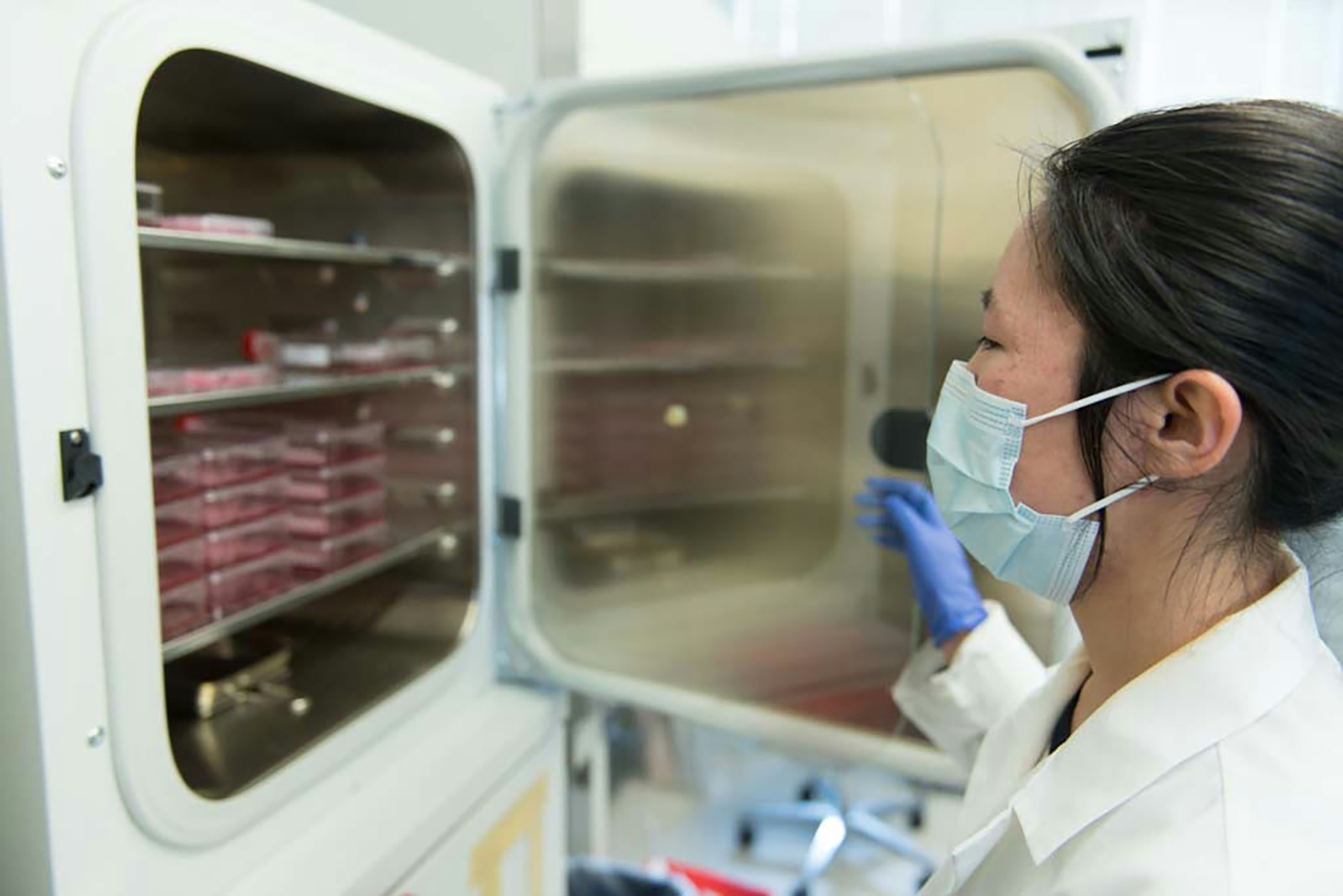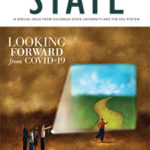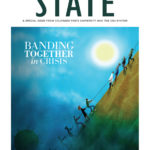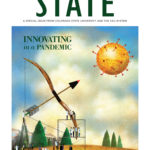Photo: John Eisele / Colorado State University
Researchers at Colorado State University are responding aggressively to COVID-19: Dozens of investigators are pursuing discoveries in disease surveillance, testing, prevention, and treatment – part of a global scientific response to the crisis.
This is just one part of the university’s discovery enterprise. In the last fiscal year, CSU research expenditures – a barometer of productivity – totaled nearly $400 million, reflecting an upward trend that strengthens student learning, societal well-being, and economic health.
Alan Rudolph, CSU vice president for research, represents this world-class science through advocacy with policymakers and funding agencies; targeted seed funding for promising new research; and the formation of industry, governmental, and academic partnerships.
Rudolph has a unique background, with extensive experience in government and industry, where he has translated biotechnology into applied outcomes for national security. He worked in the Senior Executive Service for the U.S. Department of Homeland Security and U.S. Department of Defense, running chemical and biological defense programs that protected military personnel overseas and people at home from disease threats. Rudolph began work in biodefense at the Defense Advanced Research Projects Agency; there, he led some of the nation’s first programs in diagnostics for pandemic diseases.
STATE sat down with Rudolph to discuss CSU outbreak research.
STATE: What are some of CSU’s key initiatives and assets in infectious disease research?
Rudolph: We’re known for amazing entrepreneurship and ingenuity, but sometimes the need for capital investments can be limiting. So we’ve challenged people and said, “We’re going to give you seed funding and work with you to make something impactful that will really move the needle.” We’ve made strategic hires, for instance in leadership of our Infectious Disease Research Center and One Health Institute, to help take ideas off the bench, into scale, and into commercial activity.
New vaccines and therapeutics start with lab research, and we have a tremendous asset in our Infectious Disease Research Center, one of the nation’s secure Biosafety Level-3 facilities, where scientists safely examine some of the most contagious diseases, including COVID-19.
We created the Catalyst for Innovative Partnerships to incentivize interdisciplinary research – bringing together researchers working on global concerns. One research team is mimicking natural ecosystems to examine how infectious pathogens move among different species, exactly the information we need to understand the novel coronavirus. We launched a new Program of Research and Scholarly Excellence called Infectious Disease Research and Response. Recognizing the need for building shared assets and opportunities, we formed the Coalition for Epi-Response Engagement and Science, known as CERES, a consortium of six land-grant universities, all leveraging assets on outbreaks that impact agriculture.

To bring innovations in infectious diseases to market, we established BioMARC in 2006 with federal and state funding. It’s a unique manufacturing facility working on both human and animal vaccines and other countermeasures.
STATE: How does your office connect CSU to COVID-19 research priorities?
Rudolph: Faculty are the driving force of a top-tier research university – they form new ideas and apply for grants to fund those ideas. Our office works to support and accelerate that process. What investments can we make in facilities and faculty to enrich CSU opportunities? What partnerships do we pursue?
At the start of the pandemic, we invested widely in response, including investing in a high-capacity disease surveillance instrument to boost faculty research. Surveillance in a pandemic, especially during cold and flu season, is like looking for a zebra in a herd of horses. So you want a much wider capability to sample people with symptoms and identify what diseases they may have been exposed to. That’s one example of how we deployed internal R&D funds to prime activities around the spectrum of needs for COVID response. Our investigators are leading more than 100 COVID-19 projects in all eight colleges – creating a heightened innovation ecosystem in public health in Colorado.
STATE: Some scientists are projecting vaccine availability by the end of the year. At the same time, CSU researchers have four vaccine projects underway. Why is this research important, even if someone else gets to the vaccine finish line first?
Rudolph: This work raises the visibility and impact of a whole set of post-pandemic countermeasures, including vaccines. It is all about providing solutions to an unprecedented need for immunizing our planet. CSU is unique in that we can go all the way from the bench into the arm. We are in a marathon to find a suitable vaccine and collaborate widely, even as we pursue our own solutions.
STATE: What do you view as the biggest challenges ahead in infectious disease research?
Rudolph: We need massive infrastructural investments in public health, with attention to increased frequency of disease outbreaks and pandemics. Surveillance is a critical component of enhanced resilience – the first line of defense. Future problems could come from anywhere in the world, so we must improve international and national partnerships and information systems that provide early warnings and vigorous, agile responses to prevent the significant health and economic consequences of an outbreak of this magnitude.
STATE: During the pandemic, concerns have intensified nationwide about race, equity, and justice. How does this relate to research?
Rudolph: We know diversity and innovation are inextricably linked. We’re putting out a call to our faculty to stimulate new actions directed at racial equity. We are also working to ensure that, if we are successful in the clinical development of our vaccine candidates, they are distributed to reach under-served populations.
STATE: How has COVID-19 changed your perspective of CSU’s research?
Rudolph: I’m inspired by how quickly our research enterprise engaged to take action on the COVID crisis. The land-grant ethos of local discovery leading to regional and global impacts has certainly been reinforced for me.





